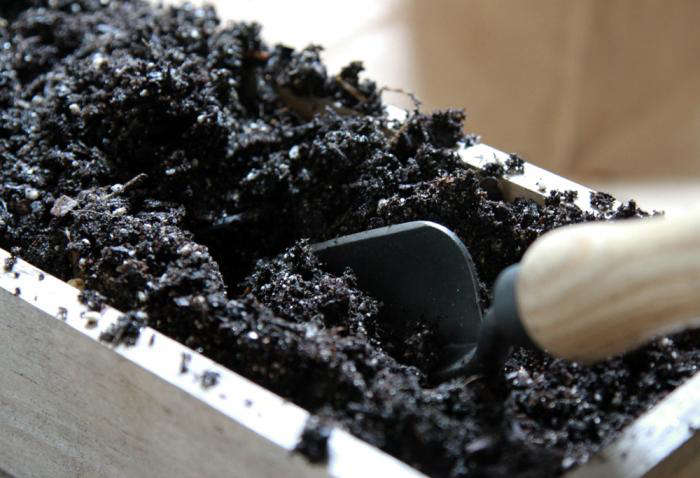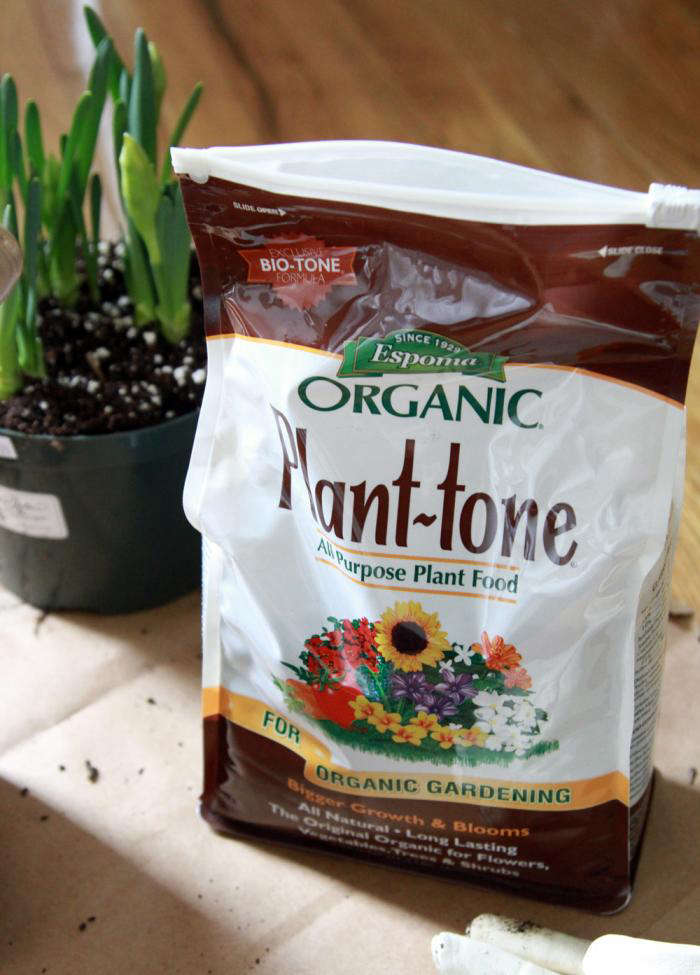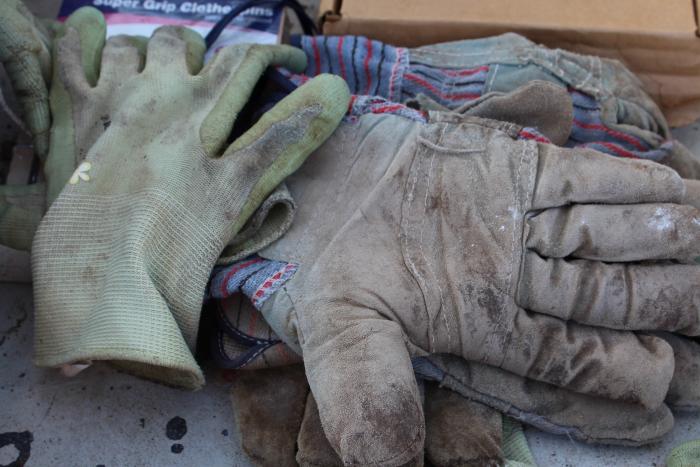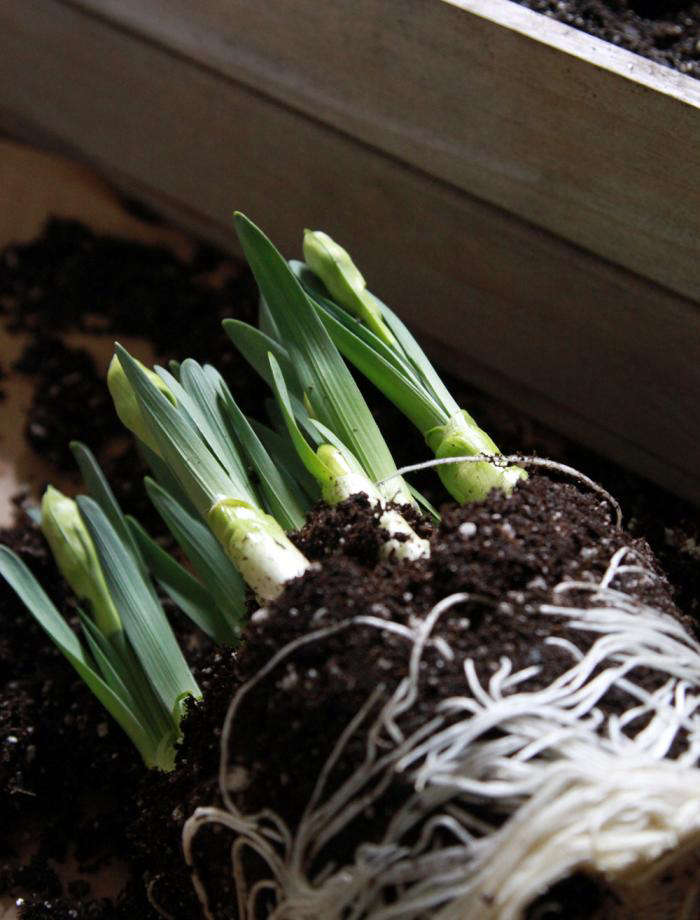When repotting a houseplant or transplanting seedlings to a window box, the urban gardener has to answer a basic container-gardening question: Is it OK to reuse potting soil? Or should I start fresh?
The basic answer is yes, it’s possible to reuse potting soil. But first do a few things to perk it up–and replace its nutrients. Here’s how:
Photography by Erin Boyle.
1. Remove old plant matter (roots, twigs, leaves).

I plucked from the window box the dried-up winter greens I had used to decorate it in January.
2. Fluff the soil.

OK. ready to begin the soil remediation. Basic science tells us that plants use the nutrients in soil to grow. Over time, reusing the same potting soil in container gardening can deplete the nutrient stores in the soil and result in lackluster plants. Luckily, there’s no need to do a wholesale soil dump each spring.
To prep the box, I used a trowel to turn my soil. Turning the soil had the dual purpose of making sure that it wasn’t invested with bugs–in which case a dump might be worth it—and making sure that the soil is light and fluffy. Hard and compacted soil doesn’t leave enough room for roots to grow, so this step is crucial. Use a sturdy trowel; a Transplant Trowel from DeWit, similar to mine, is $35.50 from Garrett Wade.
3. Add nutrients to the soil.

After I “tilled” my window box soil, I added a soil amendment. From a local shop, I bought a small bag of Plant-Tone Organic Plant Food (a four-pound bag is $9.84 from Amazon). The mixture is an organic blend of bone meal, feather meal, poultry manure, and other stuff that smells a little funny but will return to the soil the nutrients that it might have lost.
4. Blend well.

5. Make room for plants.

I gently separated some of the root bulbs from the mass to be able to fit them into my narrow box. Daffodil bulbs are hardy, so a little wriggling shouldn’t do any lasting damage.
So many flowering bulbs, so many ways to use them effectively in a flower bed or container garden. Get started with Everything You Need to Know About Bulbs & Tubers and see our curated Garden Design 101 guides to Daffodils, Tulips, and Lily of the Valley. And read more at:
- Expert Advice from Old House Gardens: 10 Ideas for Planning a Spring Bulb Garden
- DIY: An Instant Carpet of Snowdrops
- Gardening 101: How to Plant a Bulb
- 5 Quick Fixes: The Rarified Daffodil












Have a Question or Comment About This Post?
Join the conversation